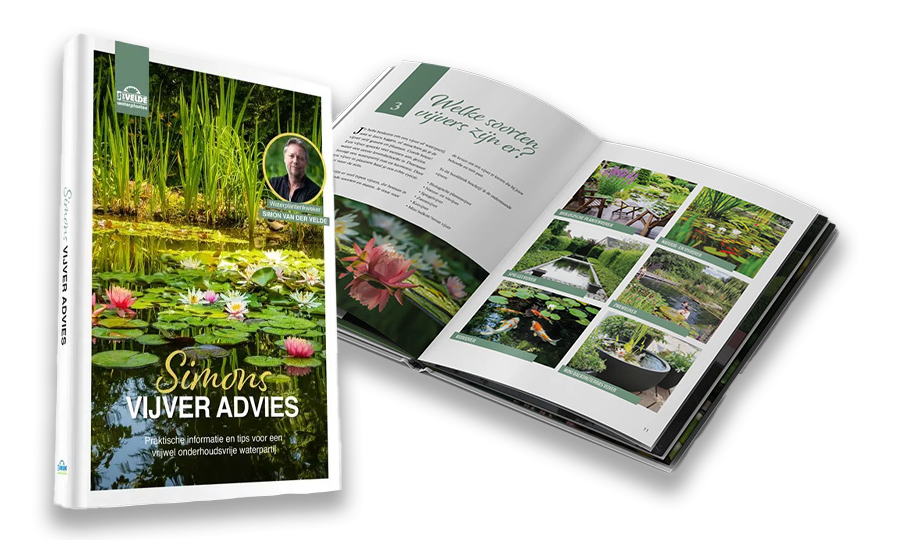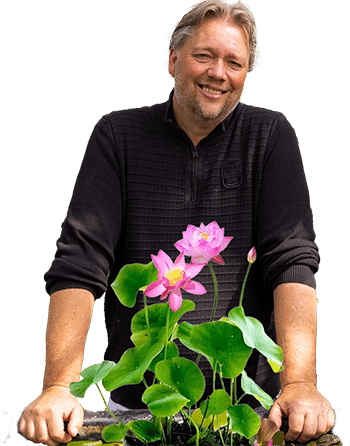Water Quality
Water quality and water values in the pond

It is quite possible to get and keep your pond in balance without a pond pump or filter, but especially without measurements and water tests.

You read more and more often that you are advised to test the water of your pond for KH, GH and PH values. Do not be tempted to buy all kinds of measuring equipment and water improvers. None of this is necessary: if your fish are swimming nicely and the plants are growing nicely, then the water in the pond is of good quality. Those are the indicators!

Tip from Simon: Bacta Clear + Oxygen Plants.
PH+: Tips for pond biological balance without PH plus
What is PH plus?
PH+ is an agent used...Fish are gasping for air: what can I do?
Why do fish gasp for air?
Fish gasp for air when the oxygen level in the water is too...Increasing oxygen in water naturally
Oxygenation: The Crucial Balance
Oxygen plays a vital role in...Making green pond clear: tips for a crystal clear pond
Green pond water: how is a green pond created?
A murky pond is out of...Pond water testing is nonsense
The hidden pitfalls of commercial pond water testing
Often I see people with a jar of pond water....pH value in your pond: looking beyond the surface of the water
pH value: The mystery unraveled
In the pond world, there is often talk...KH value in ponds: why testing only distracts you
KH value: the invisible hero of your pond balance
In the world of ponds, much revolves...GH value in ponds: why most measurements mislead you
What is GH value and why is so much emphasis placed on it?
GH,...Water hardness: what is hard water and the ideal water hardness?

Want more helpful tips?
Frequently asked questions about water quality and water values

When talking about water hardness and measuring it, many people will initially wonder what it is. Water hardness can literally be translated to the hardness of the water in the pond. It is often recommended to measure the water in the pond for hardness, 3 water values are then tested: The total hardness (GH value), the carbonate hardness (KH value) and the oxygen level (pH value). But what many people don't know is that you don't need to measure the hardness of your water at all if the pond is set up properly.
The ideal hardness of the water in your pond is determined by the combination of the GH value, KH value and the PH value. Water values and therefore hard water is expressed in DH, which stands for German Hardness degrees. The correct hardness of water is between 8 and 12 DH. So this can be seen as ideal water hardness.
Pond water values today can be measured in a variety of ways. There are all nice values established for it, making it clear when the quality and hardness of your water is good. But did you know that measuring and keeping your pond water between the desired standards is a difficult or even almost impossible task. This is due to the changing weather conditions we face. This means that 24 hours after measuring, the water in your pond can look completely different again. For this reason it is not realistic to always keep your pond water within these standards. But what is the solution? Well I have the perfect answer, because I have created a step-by-step pond construction plan that describes exactly how you can keep your pond healthy by adding the right amount of substrate, oxygen plants and pond bacteria without having to monitor the hardness of the water.
To get your pond clear, or better yet, to keep it healthy from construction, you can follow some steps that are guaranteed to lead to success, provided you follow the steps correctly, of course. In fact, it is not at all necessary to measure the hardness of your water or to soften the water in your pond. People often talk about lime in the pond but this problem does not arise when the pond is set up correctly, i.e. with substrate, bacteria, oxygen plants and so on.
Water hardness 1 means that there are 17.8 grams of lime in the water per 1,000 liters of water. The average hardness of water is between 8 and 12 DH. When the water in your pond is between 0-4 DH it means that your water is very soft, a water value between 4-8 means that your water is soft, between 8-12 means that the hardness of your water is average and a water hardness between 12-18 DH means that your water is quite hard. A DH between 8-12 is ideal.
Advice on pH value, gH value, kH value pond
Measuring water values is not necessary if you provide your pond with what it needs. We like clear water without the addition of chemicals. Read what to do if the KH, pH and GH levels are not up to standard in your pond.
Keeping the water in your pond clean and clear seems to be quite an art. Water values fluctuate and so it is constant work for the small biotope that is your pond. Yet it is possible to get and keep your pond in balance without a pump or filter, but especially without measurements and water tests. At Van der Velde Aquatic Plants we like to make the pond water clear in a natural way.










